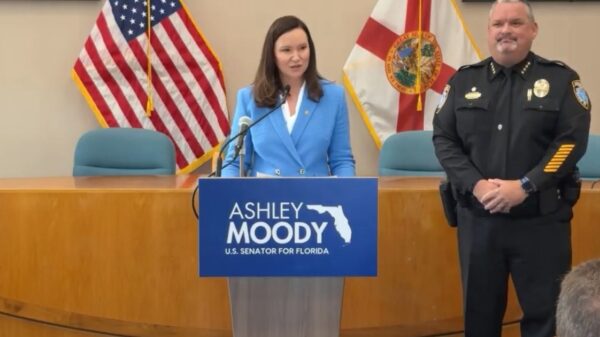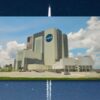Space mining evokes images of massive sci-fi starships pulverizing asteroids. While that is still within the realm of science fiction, projects are under way to make commercial space mining one step closer to reality.
Given the variety of rare minerals scientists have identified in asteroids and other space bodies, space mining has the potential to radically change the way innovative technologies are manufactured. Aluminum, silicon, titanium, and several rare earth elements (REEs) have already been discovered on the moon. Because mining these minerals on Earth poses a significant environmental risk, the possibility of moving mining operations to space has spurred significant investment and interest from Google co-founder Larry Page and astrophysicist Neil deGrasse Tyson. To kickstart commercial space mining technology, NASA has already awarded four companies contracts to extract small amounts of lunar rock to determine if mining technology works in space and also if there are enough minerals to make moon mining economical. While the space mining sector faces several critical hurdles before it can be considered economically profitable, including how to get heavy equipment to space and how to keep it fueled and functioning during mining operations, the future of space mining is increasingly imminent.
The first and most practical problem that must be solved to make space mining economically feasible is the issue of keeping vehicles fueled in space. Without the proper materials available, ships would have to make repeated and expensive trips from space pads back to earth to glean the necessary fuel to power the heavy equipment. But studies have shown an unexpected resource on these space bodies — water — which can be split into hydrogen and oxygen using solar energy and used to produce rocket propellant. Water can be a hugely beneficial short term resource for fueling the extraction of rare minerals as well as the return to Earth flights. Being able to continuously fuel mining vehicles without returning to Earth will mean only a single launch from Earth’s surface will be needed, potentially saving billions of dollars. Studies of asteroids that have fallen to Earth have revealed platinum, which is used in electronics and as a catalyst for certain chemical reactions, palladium, which is used in fuel cell manufacturing, and helium-3, which has the potential to spur nuclear fusion energy. The top ten asteroids that are closest to Earth and projected to have the greatest value could net a profit of around $10.5 trillion.
But launching the machines needed to actually extract these resources poses the greatest obstacle to space mining’s economic viability. NASA has invested in two projects that would allow rapid surveying of lunar craters and water harvesting, which could further fuel surveying operations, prolong prospecting trips, and allow for smaller mining equipment to be launched into orbit. In addition, researchers from the University of New South Wales have conducted tests with a vacuum-like machine that will attempt to pull the top layer of sediment from space bodies into tubes that can then be tested to see if certain minerals are present in the rock. The process of biomining uses bacteria to detect whether certain minerals are present by introducing these bacteria into the spatial body where they consume particular materials and produce a traceable gas. This could make identifying higher concentrations of resources easier by only requiring the launching of smaller vehicles into orbit capable of carrying this bacteria.
The greatest problem facing the industry is the cost of launching heavy equipment into orbit. Providing the thrust power needed to launch current mining equipment into orbit would be by no means economical. Engineers with Nortthrup Grumman’s Proximity Operations and Docking Lab (RPOD) recently developed the first operational autonomous spacecraft that was able to dock with a satellite and provide propulsion and positioning control. By launching mining equipment into orbit piecemeal, then assembling it in orbit, developers could then anchor heavy mining equipment on the moon or another space body. The falling costs of space launches, thanks to private companies like SpaceX developing even cheaper reusable rockets, has been a major factor in space mining even being within the realm of possibility. A single NASA flight cost $1.6 billion in 2011. Today, private companies charge anywhere from $62 million to $5 million depending on the payload due to the private sector leading the way in reducing launch costs.
Launching multiple batches of smaller space crafts could lower the costs of space mining, yielding more profit. The shrinking size of satellites and autonomous vehicles have allowed rockets to launch them in batches, which removes the need to do multiple launches for different satellites and vehicles. NASA’s next-generation rocket, the Space Launch System has the capacity to launch 27 tons of cargo into orbit. Space mining startups like AstroForge have attempted to remedy the weight problem by sending up mining payloads attached to commercial satellite launches to reduce the amount of capital needed to fund multiple launches. High-value minerals like platinum that could be extracted from asteroids would only be profitable if several hundred kilograms were to be returned to Earth, so launching multiple batches of refining machines could be a feasible way to extract minerals in the near future.
The potential upsides of moving mining operations off of Earth could be revolutionary for the environment and help increase production of the hundreds of components, technologies, and other products that require these rare minerals. The falling costs of launches and the multiple missions to identify particular minerals on Earth’s moon, Mars, and nearby asteroids deserve real-world consideration instead of being relegated to the realm of science fiction.
Roy Mathews is an Innovation Fellow at Young Voices. He is a graduate of Bates College and former Fulbright Fellow in Indonesia. He has been published in NRO, Law & Liberty, and The National Interest. This article was originally published by RealClearScience and made available via RealClearWire.



















